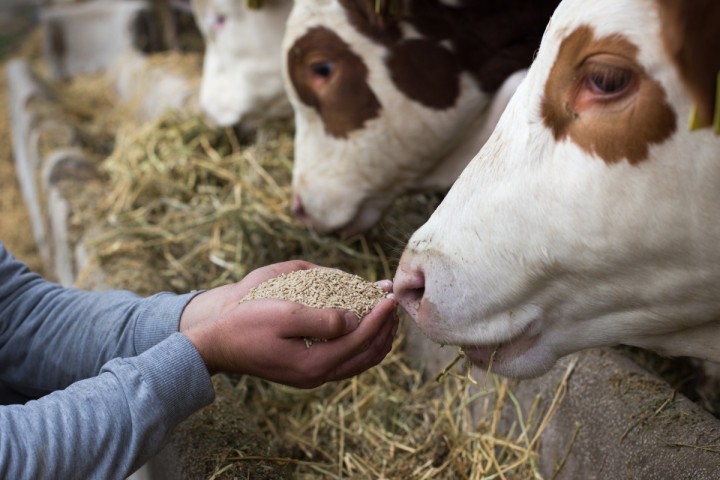‘Invisible’ soy linked to deforestation hides in animal products, report shows

An estimated 55 kilograms of soy is embedded in the consumption of animal products like meat, dairy, eggs and farmed fish, according to calculations included in a report commissioned by the World Wildlife Fund (WWF). [SHUTTERSTOCK/JEVTIC]
The topic of soy consumption has been back in vogue after a recent push from European lawmakers to guarantee that products that EU citizens buy, use and consume on the single market do not contribute to global deforestation and forest degradation.
Soy production is linked to the conversion of ecosystems to farmland which leads to a release of trapped carbon dioxide in the atmosphere.
Over 80% of the world production of soybeans is localised in Brazil, the United States, and Argentina combined. At the same time, EU countries and the UK produce less than 1% of the global total.
For this reason, and because soy is not a key ingredient in the diets of EU and UK citizens, its presence in the European food supply chain is underestimated.
However, while direct use of soybeans and soybean oil for food amounts to 3.5 kilograms per citizen yearly, an estimated 55 kilograms of soy is embedded in the consumption of animal products like meat, dairy, eggs and farmed fish, according to calculations included in a report commissioned by the World Wildlife Fund (WWF).
According to the European Compound Feed Manufacturers’ Federation (FEFAC), soy carries out the lion’s share of compound feed formulation in the EU-27 and the UK, accounting for 29% of the crude protein for feed use.
For the WWF, this means that Europeans are unwittingly wiping out forests across the world, contributing to the destruction of precious natural ecosystems.
Burden should not be put on farmers
The European Commission proposed legislation last year that aims to curb consumption of products associated with deforestation while simultaneously encouraging consumption from sustainable supply chains.
Presented back in November 2021, the proposal would introduce a requirement for companies selling certain products to show that they do not originate in deforested areas.
However, according to WWF, this law would not protect other ecosystems threatened by food production. Almost a quarter of soy imports from South America come from the Cerrado in Brazil, which contains a mix of ecosystems that would not all be covered by the proposed legislation.
While Europe is starting to produce more soy, its needs far outpace current protection levels,
According to Anke Schulmeister, Senior Forest Policy Officer at WWF, it is unnecessary for the EU to transition away from soy for animal feed fully but instead to source it from already existing sustainable soy farms. “We’re not starting from scratch,” said Schulmeister.
While there are potential costs for farmers transitioning to more sustainable soy production or use, Schulmeister stressed that the burden should be placed on EU institutions to make it possible, rather than the farmers themselves.
A balanced diet helps the climate
Meat products have the highest concentration of soy embedded in the product, averaging 500 grams per kg, but this is not listed as an ingredient on food labels.
Schulmeister says that it is essential that EU and UK citizens be informed about their soy consumption and understand its environmental impact to be an active part of the push towards sustainable soy production.
On an individual level, she notes that eating a more balanced diet can reduce people’s personal impact on the environment since there would be less consumption of meat and thus soy for animal feed.
Ukraine’s war impact still unknown
Regarding concerns raised from EU institutions and officials about agricultural industry disruption from the crisis in Ukraine, Schulmeister says that it is still too early to tell what those effects will be on the soy market.
Ukraine produces most corn for animal feed in Europe thus, there may be an additional demand for soy caused by a disruption in corn exports.
Regardless, Schulmeister said that this crisis is not a reason to forget environmental goals. “This is not going to go away, whether we have a challenge with Ukraine or not,” she said.

